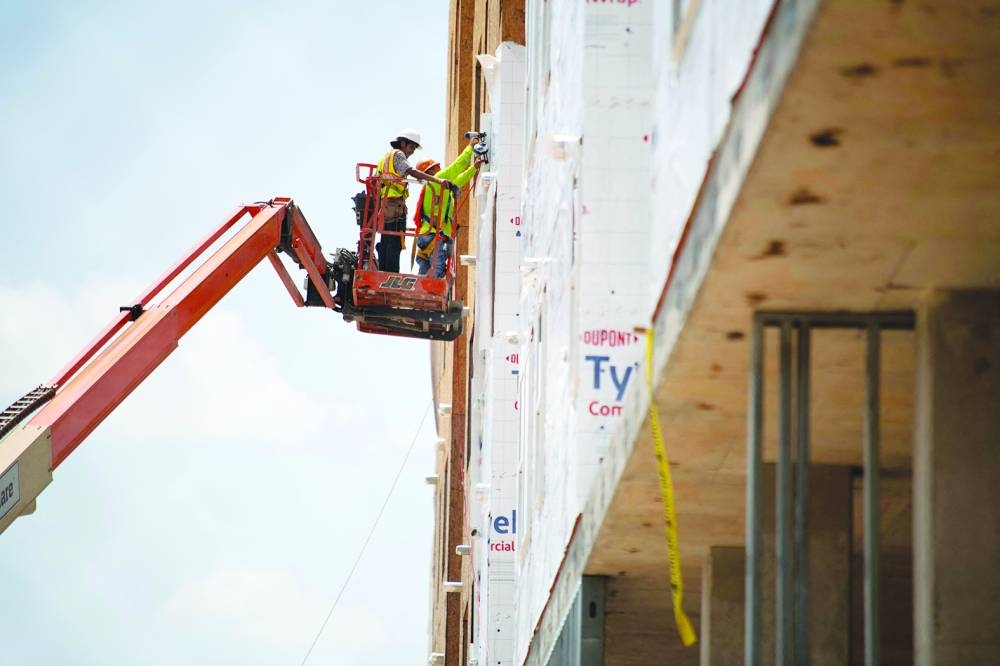US job growth picked up in August, but the unemployment rate jumped to 3.8% and wage gains moderated, suggesting that labour market conditions were easing and cementing expectations that the Federal Reserve will not raise interest rates this month.
The closely watched employment report from the Labor Department yesterday also showed 736,000 people entered the job market last month, boosting the participation rate to the highest level in 3-1/2 years.
Employment gains in June and July were revised down to show 110,000 fewer jobs than previously reported. The report followed on the heels of news this week that job openings dropped to the lowest level in nearly 2-1/2 years in July. The labour market is slowing in response to the US central bank’s hefty rate hikes to cool demand in the economy.
“This is the Fed’s dream jobs report,” said Bill Adams, chief economist at Comerica Bank in Dallas.
Nonfarm payrolls increased by 187,000 jobs last month. That was sharply down from the monthly average gain of 271,000 over the past 12 months.
The economy needs to create roughly 100,000 jobs per month to keep up with the increase in the working-age population.
Economists polled by Reuters had forecast non-farm payrolls would increase by 170,000 jobs last month, with estimates ranging from 40,000 to 278,000. A strike by about 16,000 Hollywood actors and the Yellow trucking bankruptcy in early August, which left about 30,000 workers unemployed, had led economists to anticipate slower job growth in August.
A tendency for the initial payrolls count to be weaker in August before being subsequently revised higher in September and October also factored into economists’ expectations.
Though demand for labour is slowing, some services businesses like healthcare, restaurants, bars and hotels are still desperate for workers. Employment gains in August were led by the healthcare sector, which added 71,000 jobs. Leisure and hospitality payrolls increased by 40,000. Employment in the industry remains 290,000 jobs below its pre-pandemic level.
The construction industry added 22,000 jobs, while manufacturing payrolls rebounded by 16,000 jobs. Employment in the professional and business services sector rose by 19,000, but temporary help services, which is seen as a harbinger for future hiring, continued to decline, losing 19,000 positions. The transportation and warehousing sector shed 34,000 jobs, reflecting the Yellow trucking bankruptcy. There were also job losses in the information sector, in part reflecting the Hollywood strike.
Wage growth slowed last month, with average hourly earnings rising 0.2% after gaining 0.4% in July. In the 12 months through August, wages advanced 4.3% after increasing 4.4% in July.
US stocks opened higher. The dollar fell against a basket of currencies. US Treasury prices were mostly lower.
Since March 2022, the Fed has raised its policy rate by 525 basis points to the current 5.25%-5.50% range. Financial markets are now betting the central bank is done raising rates and may start cutting them next year, according to CME Group’s FedWatch Tool. Futures tied to the Fed’s policy rate show only a slight chance of a rate hike at the Sept. 19-20 meeting.
Details of the household survey from which the unemployment rate is derived were mixed. Household employment increased by 222,000.
That was, however, not enough to absorb the 736,000 people who entered the force.
As a result, the unemployment rate increased to 3.8%, the highest level since February 2022, from 3.5% in July. The jobless rate remains below the Fed’s latest median estimate of 4.1% by the fourth quarter of this year.
The labour force participation rate, or the proportion of working-age Americans who have a job or are looking for one, increased to 62.8%. That was the highest level since February 2020 and was up from 62.6% in July.

Construction workers put up house wrap in Houston. US job growth picked up in August, but the unemployment rate jumped to 3.8% and wage gains moderated, suggesting that labour market conditions were easing and cementing expectations that the Federal Reserve will not raise interest rates this month.
